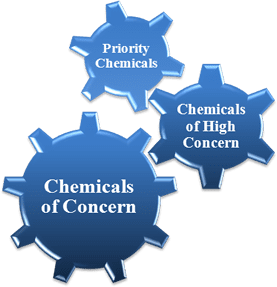Maine proposes four chemicals for priority designation
Maine proposes four chemicals for priority designation. The Maine Department of Environmental Protection (DEP)  has proposed four rules that would designate cadmium, formaldehyde, mercury and arsenic as priority chemicals. Manufacturers, importers or distributors of certain children’s products which are in the stream of commerce in Maine will have to report the use of these four chemicals in their products if they are above a certain “minimum amount”.
has proposed four rules that would designate cadmium, formaldehyde, mercury and arsenic as priority chemicals. Manufacturers, importers or distributors of certain children’s products which are in the stream of commerce in Maine will have to report the use of these four chemicals in their products if they are above a certain “minimum amount”.
The proposed rule states that, “No later than 180 days after the effective date of this chapter, the manufacturer [this would include an importer as well] of any of the following: bedding, childcare articles, clothing, cosmetics, craft supplies, footwear, games, jewelry and embellishments, safety seat, occasion supplies, personal accessories, personal care products, school supplies, or toys which are intended for use by a child under the age of 12 years, that contain intentionally-add [chemicals] shall report to the department the following information:
- The name and address of the manufacturer [including importers]
- The name, address and phone number of a contact person for the manufacturer [including importers]
- Description of the product or products containing [the chemical], including the overall size of the product and/or component of the product that contains [the chemical] and whether the product or chemical-containing component of the product, can be placed in the mouth (typically if the item is smaller than 5 cm in one dimension, it is regarded as mouthable)
- The number of items sold or distributed in Maine or nationally
- The amount of [the chemical] in the product reported
- The function of [the chemical] in the product reported
- Any other information the manufacturer deems relevant to the reporting of the chemical, such as relevant independent scientific study on exposure specific to the amount of chemical present in the finished product reported or product of similar functionality.
A public comment period on the proposed rules expired on January 31, 2014. The proposed rules would implement Maine’s Toxic Chemicals in Children’s Products law, which aims to protect the health, safety and welfare of children by reducing their exposure to chemicals of high concern by providing substitutes when feasible. Maine has already listed bisphenol A (BPA) and nonylphenol/nonylphenol Ethoxylates (NP/NPE) as priority chemicals.
Unsure how this might impact your product or future product development? Contact us today to see how we can help. info@jacobysolutions.com or 866-873-7335 ext. 101

